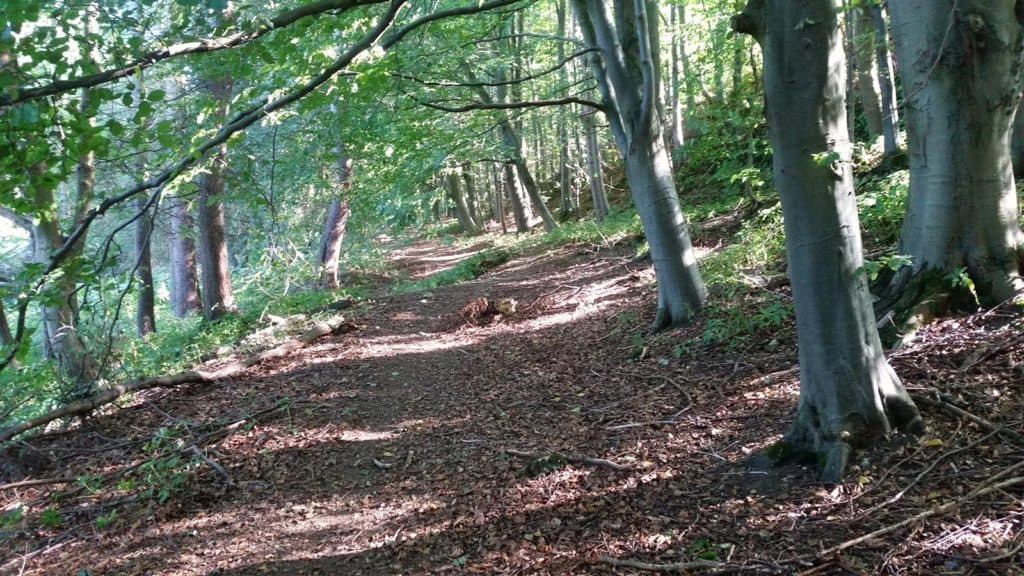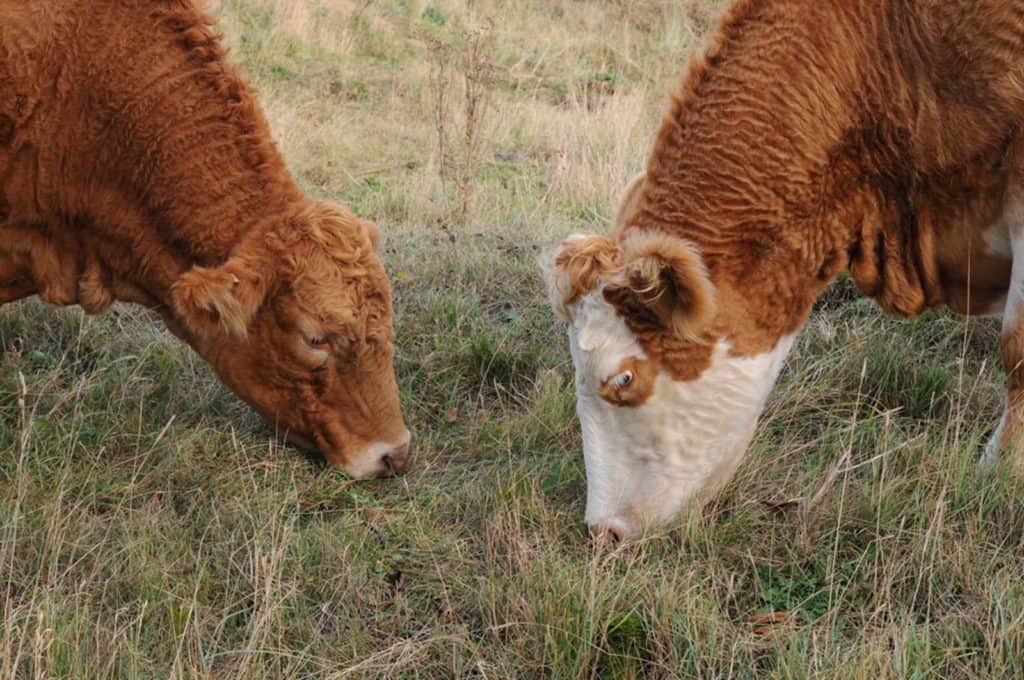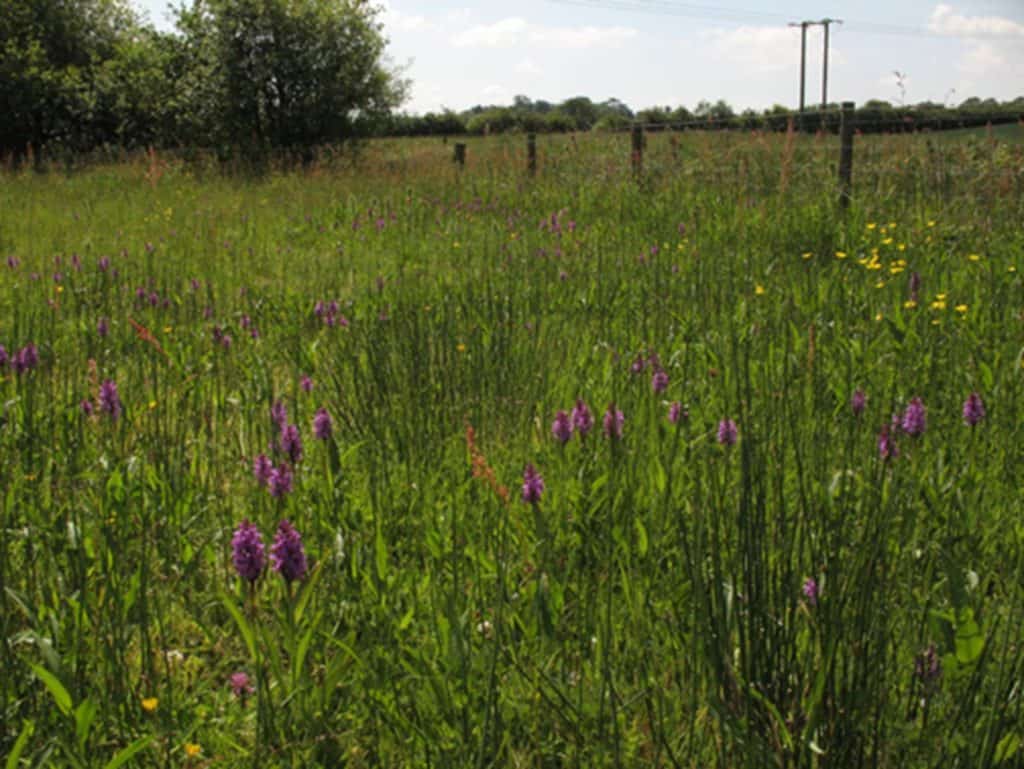What is diversity?
Ecological diversity (or biodiversity) is the total amount of variety of life on earth.
Both species diversity and genetic diversity are important within a habitat, because they make it more likely that the habitat can adapt successfully to changing conditions.
Diversity in terrestrial habitats
Woodland
Woodland is a habitat where the vegetation is dominated by trees which are more than 5 meters high when mature, forming a distinct canopy (although the canopy is sometimes open). Woodlands can be divided into two basic types depending on types of trees:
- Deciduous woodland
- Conifer woodland
They can also be classified in terms of age and origin. Here are some important groups:
- Ancient semi natural woodland
- Secondary woodland
- Managed plantation
- Managed coppiced
Grassland
Grassland is a common habitat within the British Isles. Grassland is naturally maintained as grassland by grazing herbivores, and, with human interference, by mowing. In ecological terms, grassland is a plagio-climax community. If grazing and mowing stopped, the land would become woodland.
What questions do biologists ask?
You can ask many scientific questions about contrasting areas within a similar habitat. Here are some examples.

- Describe how the diversity of ground flora can be measured.
- How does the ground flora vary between different parts of this wood?
- Is this variation in ground flora related to light levels?

- How does vegetation vary between grazed and ungrazed areas of grassland?
- In what ways do animals grazing cause changes in the vegetation?
- Why is grazing often used to help manage nature reserves?

- Why does diversity vary between different parts of this grassland?
- Is high grassland diversity always desirable?
- How should this grassland best be managed?
What questions could you investigate with fieldwork?
Here are some examples. Each research question has been split into 2 or 3 sub-questions.
| Research question | Sub questions |
|---|---|
| How does coppicing affect the ground flora of a woodland? | How does ground flora diversity differ between coppiced and uncoppiced areas of the wood? How does ground flora vary between coppiced stands of different age? What abiotic differences are there? |
| How does trampling affect the diversity of vegetation in grassland? | How does vegetation differ between trampled and untrampled areas of the grassland? Are there any variations in plant height and morphology? What abiotic differences are there? |
|
What level of grazing produces the highest grassland diversity? | Compare diversity in 3 areas of grassland with a different grazing regime, plus a control. Why do these varaiations occur? What abiotic differences are there? |
Synoptic links
A good investigation will make links between different parts of the A-Level Biology specification. Here are some possible synoptic links for investigations into freshwater habitats.
| Synoptic link | Detail |
|---|---|
| Succession | Grazing, trampling and woodland clearance produce a deflected climax. Abandonnment will lead to secondary sucession. |
| Sustainability | Food production. Conservation. |
| Photosynthesis | Sunlight changes in different areas of woodland. |
| Conservation | Appropriateness of different management regimes. |
Before you start
Make sure that any factor you are investigating has had time to produce an effect.
Changes in the growth form (morphology) of a species are unlikely to be visible for 2-3 weeks changes in species composition may not be significant for 2 or more growing seasons. Mown grassland whether it is kept for recreation or its pleasing appearance (aesthetic value) will often be subjected to other management techniques. Whether you are just looking at the effects of mowing or doing a trampling study find out what is going on before you start your investigation to try and make sure that only the factor that you are investigating varies.
Grassland
What is special about grasses?
Grasses are able to survive regular cutting or grazing as their growing points are situated at the base of the plant. Many perennial grasses do not need to rely on the production of flowers and seeds for reproduction as they have extensive creeping stolons (runners) or underground stems (rhizomes) which allow the plants to spread vegetatively.
The meristem is a group of actively dividing cells forming the growing point of a shoot or a root. Most plants have an apical meristem; the growing point is located at the tip of the shoot (or root). So many plants lose their growing points when they are grazed or mown, often resulting in their death. Some plants avoid death if they are able to produce a new side shoot from an axillary bud (the bud in the axil of a leaf).
In grasses, the meristem is at ground level. Lateral shoots (known as tillers) grow from the base of the main shoot, and when the upward growth of these is prevented by grazing, new buds are formed at their base and grow out laterally into new vegetative branches. In this way, grasses are adapted to tolerate grazing, cutting and trampling.
As well as grasses, there are many species of flowering plant that live in grassland. Many of these have a rosette growth form. The shoot meristems are very close to the ground, so leaves grow outwards from the base in an overlapping spiral fashion, producing a flat circular rosette. Many of these plants also produce much taller flowering stems. The taller stems may be removed by mowing, but the leaf rosettes survive. Other plants have a creeping or trailing growth form, which enables the growing point of the shoot to remain intact below the general level of grazing or of mowing. In taller vegetation, creeping plants may not be able to compete effectively for light, while many rosette plants grow more upright.
Mowing
Many grassy areas are mown, especially in towns and cities. Mowing cuts the plants, and the cut material is often removed. Mowing may also have a crushing effect if heavy machinery and rollers are used. As a result of trampling and mowing it is often easy to see a change in the height of the vegetation and both can result in changes to soil conditions as a result of compaction.
Apart from mowing, grassland can be managed in many ways.
- selection of grass species
- mechanical removal of weeds
- replacement of damaged turf
- artificial irrigation
- improved drainage
- soil compaction by rolling
- application of chemicals (e.g. fertilisers, weed killers, line paint)
- rotation of playing pitches
The effects are likely to be spread more evenly in mowing than in trampling and extreme damage e.g. the creation of bare ground is less likely. Therefore it is usually best in a mowing study to compare directly two areas cut for example:
- by different types of machine e.g. strimmers, hover mowers, rotary mowers, ride-on mowers
- at different time intervals
- at different heights
In a trampling study it is often possible to see different degrees of trampling and a good way of investigating this is to look at changes along a transect line. Apart from the obvious immediate effects of cutting and flattening the vegetation these differences in height may also be due to a change
- in the species present – species composition
- the number of different species present – species richness
- the types of growth form present
- changes in the growth form of individual species
Explaining the effects of mowing
For convenience, plants other than grasses and sedges are referred to as broad-leaved species.
In short grass, grasses, rosette plants and creeeping plants can tolerate the removal of plant material, as their growing points are close to the ground surface, and so are not removed. In long grass there will be strong competition for light and many small low growing broad leaved plants disappear. Some plants however, however are able to vary their morphology in grassland of different heights.
The ribwort plantain Plantago lanceolata is a good example. In short regularly cut grass the plant forms small neat rosettes. In long grass the leaves become larger, longer and narrow and also stand upright at an angle from the ground. These long upright leaves help the plant to receive more light.
Trampling
Plants growing on trampled areas have to be tolerant to soil compaction and its effects on soil conditions. However, the species composition of the plant community, will also be influenced by a number of other interacting factors.
- Physical damage to plants by removal of growing tips and crushing occurs, so having the right growth form is important. Species able to form rosettes (e.g. plantains, daisies and dandelions) are often common.
- Damage may also reduce flowering so the ability to reproduce vegetatively is another advantage. In white clover the leaves are carried up to the light on long leaf stalks. The main stem forms a horizontal runner (stolon) which keeps the growing point close to the soil surface and provides a means of vegetative reproduction.
- Trampling, like mowing, results in different heights of vegetation so competition for light might be a factor.
- Extreme trampling can result in removal of parts of the turf and the creation of bare ground. This may allow new species to colonise particularly less vigorous species which are not good competitors.
- On bare ground and in short turf plants are more likely to have to be able to survive extremes of relative humidity and temperature. Particular growth forms of mosses, for example, can often be linked to the humidity of their habitat. Species with turf and cushion forms appear to be better able to resist drying out than the weft and mat forms which most often occur in taller vegetation.
- Deposition of litter and dog fouling may cause changes in the soil mineral content though any change is difficult to measure without sophisticated equipment.
Explaining the effects of trampling
Relatively few species are likely to be able to survive when environmental conditions are extreme for example
- in most trampled areas where the chance of physical damage is high and the soil is very compacted
- in non trampled areas where the vegetation is tall and there is strong competition for light
It is at the boundary between the two extremes that the greatest number of species is usually found. At the edge of a trampled areas species are least affected by trampling but avoid too much competition with the more vigorously growing species. The following 3 photographs show a transect from the centre of a heavily used footpath to the edges.
Case study: distribution of ribwort plantain and greater plantain in trampled areas
Two species of plantain, ribwort plantain (Plantago lanceolata) and greater plantain (Plantago major), are very common in grassy areas in Britain.
If you carry out a transect of a moderately trampled footpath (i.e. where there is more than just bare soil in the centre of the path), you are likely to find that there is a higher abundance of greater plantain in the more trampled centre of the path, and a higher abundance of ribwort plantain in the less trampled edges of the path.
Ribwort plantain is less well adapted to heavily trampled sites. It is less tolerant to physical damage and is less likely to grow in waterlogged soil. By contrast, greater plantain is most abundant on heavily trampled ground. It is very tolerant of waterlogging and physical damage due to trampling. Itsseeds which germinate best on open ground.
Ribwort plantain can readily vary its growth form in response to environmental conditions. In shorter grass, it grows in the rosette form with short leaves held flat to the ground, while in longer grass its leaves are longer and more angled off the ground. Its seeds can germinate amongst other plants. These factors help it to grow in less trampled areas with taller vegetation, where there is more competition to reach the light.
Both plantain species are frequently found on trampled ground. The table shows how the characteristics of these two species are suited to this habitat.
| Feature | Greater plantain | Ribwort plantain |
|---|---|---|
| Main growth form | rosette | rosette |
| Drought | tolerant | not tolerant |
| Physical damage by trampling | very resistant | moderately resistant |
| Ability to vary growth form under different conditions | can vary | varies readily |
| Vegetative reproduction | limited but can form daughter rosettes from lateral buds | limited but can form short thick rhizomes |
| Seed dispersal | mucilage on seed coat becomes very sticky when wet allowing seeds to stick to animals including humans and also machinery helping to disperse seeds along track ways | mucilage on seed coat becomes very sticky when wet allowing seeds to stick to animals including humans and also machinery helping to disperse seeds along track ways |
| Seed germination | best near soil surface on open disturbed ground | best on lightly compacted soil either in open or amongst vegetation |
| Overwintering | as small rosettes or underground | as small rosettes |

Secondary and Further Education Courses
Set your students up for success with our secondary school trips and courses. Offering excellent first hand experiences for your students, all linked to the curriculum.
Group Leader and Teacher Training
Centre-based and digital courses for teachers
Experiences for Young People
Do you enjoy the natural world and being outdoors? Opportunities for Young People aged 16-25.
